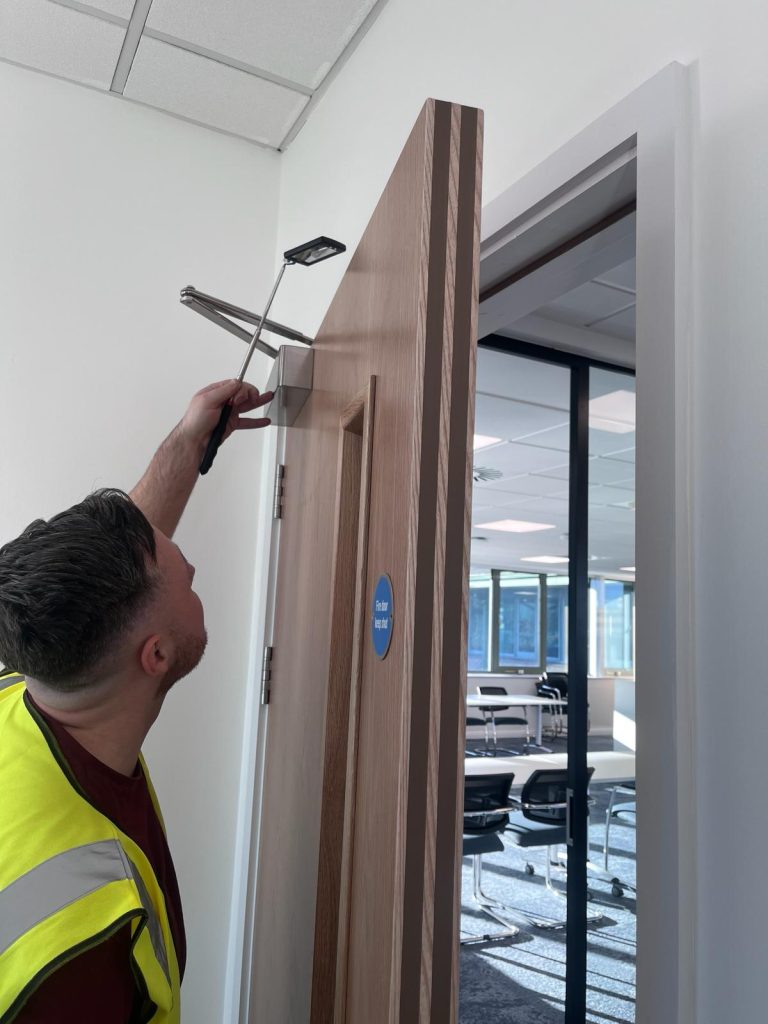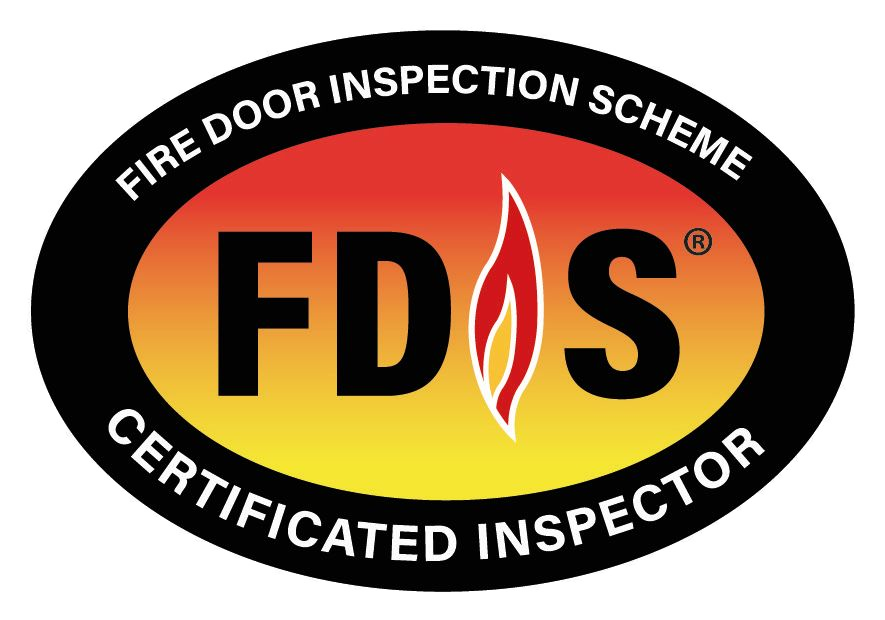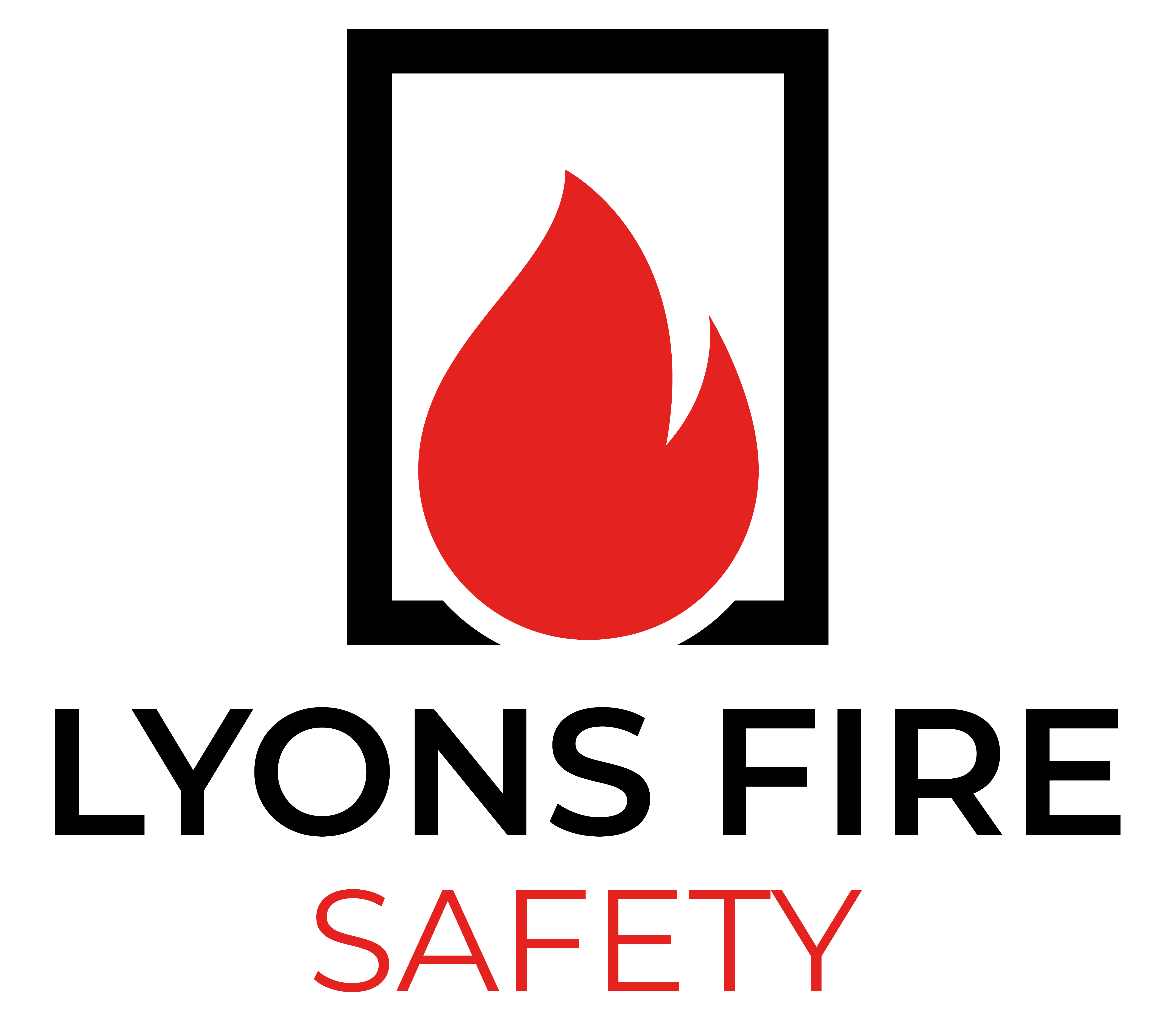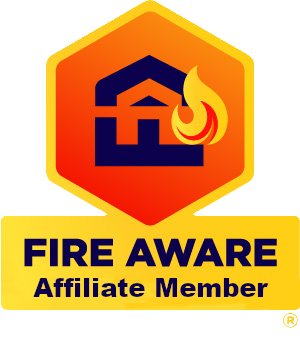Fire Hazard Identification
At Lyons Fire Safety (LFS), we understand that fire safety goes beyond just installing and maintaining fire doors. A crucial component of a safe environment is the systematic identification of potential fire hazards within your premises.
This process is not only essential for effective fire prevention but also a legal requirement under UK regulations. We have further information here on our UK Fire Safety Regulations Guide: Compliance
Today, however, we’ll explore the importance of fire hazard identification, the common fire risks in UK buildings, and how our services at LFS complement your overall fire safety strategy.
What is Fire Hazard Identification?
Fire hazard identification is the process of recognising and documenting potential sources of fire within a building or workplace.
At LFS, we utilise something called the “Golden Thread”
The Golden Thread
It’s a key concept introduced by the Building Safety Act 2022. It refers to the digital trail of information that follows a building throughout its lifecycle, from design and construction to occupation and maintenance. This comprehensive record ensures transparency, accountability, and improved safety for all higher-risk buildings. You can read more about – Optimising Fire Safety: The Power of “Golden Thread” – here
This critical step is the foundation of a comprehensive fire risk assessment, mandated by the Regulatory Reform (Fire Safety) Order 2005 for all non-domestic premises in England and Wales.
By identifying these hazards, you can take proactive steps to mitigate risks and enhance the safety of your property and its occupants. That’s where we come in, at Lyons Fire Safety.
Why Prioritising Fire Hazard Identification Matters
Fire hazard identification is vital for several reasons:
- Legal Compliance: It ensures that your business complies with UK fire safety laws, avoiding potential fines and legal consequences.
- Prevention: Identifying hazards allows for timely interventions, reducing the likelihood of a fire breaking out.
- Protection: It safeguards lives, property, and business continuity by minimising fire-related risks.

Common Fire Hazards in UK Buildings
Understanding the typical fire hazards present in UK workplaces is essential for effective identification and prevention. At LFS, we typically deal with fire doors focusing on – lifecycle management, upgrades, and of course, Common Problems with Fire Doors. However, it’s important to talk more generally up common risks that can start fires elsewhere, that’ll will be exacerbated but incorrect installations of fire doors, or fire doors that are against regulation, or out of date. Here are some of the most common risks:
Electrical Equipment
Electrical faults are a leading cause of fires in the UK. This includes faulty wiring, overloaded sockets, and damaged electrical appliances. Regular inspections and maintenance are crucial to minimize these risks.
Flammable Materials
Many workplaces contain flammable materials such as cleaning products, cooking oils, and other combustible substances. Correct storage and handling of these materials are essential to prevent accidental ignition.
Heating Appliances
Portable heaters, boilers, and other heating appliances can pose significant fire risks if not correctly maintained or used. Regular servicing and adherence to manufacturer guidelines can mitigate these dangers.
Smoking Materials
Despite strict regulations, smoking-related fires still occur. Cigarette butts, matches, and lighters should be properly disposed of, and smoking areas should be well-managed and located away from flammable materials.
The Fire Hazard Identification Process
Effective fire hazard identification requires a systematic approach, tailored to the unique risks of your workplace. The responsible person, as mandated by UK law, plays a crucial role in this process by regularly conducting and documenting checks to ensure ongoing fire safety. Here’s how a thorough fire risk assessment should be conducted:
Visual Inspections
The responsible person should regularly inspect all areas of the premises for visible fire hazards. This includes checking for overloaded sockets, damaged equipment, and improperly stored flammable materials. Regular walk-throughs are essential to spot potential risks early.
Review of Work Practices
Analyse daily operations that could contribute to fire risks. For instance, in environments like kitchens, assess the safe use of cooking equipment and storage of flammable substances. Understanding how routine activities can create hazards is key to prevention.
Equipment Assessment
Evaluate all machinery, electrical devices, and other equipment for potential fire hazards. Ensure that everything is regularly maintained and complies with safety standards. The responsible person should keep a detailed log of maintenance activities.
Documentation Review
Review maintenance records, incident reports, and past fire risk assessments. This documentation provides valuable insights into recurring issues and highlights areas needing extra attention. Keeping these records up to date is a legal obligation for the responsible person.
UK-Specific Considerations
Fire hazard identification must align with specific UK regulations to ensure compliance:
- Regulatory Compliance: Hazards should be assessed in accordance with the Regulatory Reform (Fire Safety) Order 2005, ensuring all fire safety measures are legally compliant.
- British Standards: Adhere to relevant British Standards, such as BS 5839 for fire detection systems and BS 5266 for emergency lighting, which guide the maintenance of a safe environment.
- Local Authority Guidelines: Consult local fire authorities for specific guidelines relevant to your area. Compliance with these guidelines is crucial for passing inspections and maintaining safety.
Professional Assessments
While basic hazard identification can be done in-house, partnering with professional fire risk assessors ensures a more thorough evaluation. At LFS, we specialise in fire door inspections, installations, and maintenance, which are integral to your fire safety strategy.
Our services help to contain fires and protect evacuation routes, ensuring that your passive fire protection measures are robust and compliant.
Professional Assessments
- Expertise: Professionals can identify less obvious risks that may be missed during in-house inspections.
- Compliance: Ensure that your fire safety measures align with current UK regulations.
- Recommendations: Receive tailored advice on how to mitigate identified risks effectively.
Ongoing Monitoring and Reviews
Fire hazard identification is not a one-time task. Regular monitoring and reviews are essential, particularly after significant changes to your building layout or use, following any fire-related incidents, or when new fire safety legislation is introduced.
Contact Lyons Fire Safety Today
Effective fire hazard identification is a cornerstone of fire safety management in the UK. By systematically identifying and addressing potential fire hazards, businesses can significantly reduce the risk of fire incidents, protect lives and property, and ensure compliance with UK fire safety regulations.
Don’t compromise on fire safety. Contact us today to schedule an assessment of your fire doors and other passive fire protection measures.
Our experts will identify any issues, provide recommendations, and implement effective solutions to ensure your building’s fire protection is robust and compliant with UK regulations.
Phone: 0121 517 0562
Email: david@lyonsfiresafety.co.uk
Choose Lyons Fire Safety for comprehensive fire door solutions, maintenance, and compliance. Let us help you enhance your fire safety strategy and ensure the highest level of protection for your business
FAQs
What is the "Golden Thread" in fire safety, and why is it important?
The “Golden Thread” refers to a digital record that follows a building through its lifecycle, ensuring transparency and accountability in fire safety. It’s crucial for maintaining up-to-date information on fire hazards, which is essential for ongoing safety management.
How does fire hazard identification integrate with the Building Safety Act 2022?
Fire hazard identification is a key component of the Building Safety Act 2022. It ensures that fire risks are continuously assessed and documented, aligning with the Act’s focus on safety in higher-risk buildings.
What tools can assist with fire hazard identification?
Tools such as fire safety software, standardized checklists, and thermal imaging technology can significantly enhance the accuracy and thoroughness of fire hazard identification, ensuring no risks are overlooked.
Why is it essential to involve professionals in fire hazard identification?
Professional assessments ensure compliance with UK regulations and provide expert insights that might be missed during in-house inspections. Professionals can also recommend specific actions to mitigate identified risks effectively.
How do British Standards influence fire hazard identification?
British Standards, such as BS 5839 for fire detection systems, provide guidelines that must be adhered to during fire hazard identification. Compliance with these standards is essential for maintaining a safe environment and meeting legal requirements.
Can fire hazards be completely eliminated?
While it’s challenging to eliminate all fire hazards, regular identification and proactive management can significantly reduce risks. Effective fire safety strategies focus on minimizing hazards and ensuring swift response capabilities.
What role does documentation play in fire hazard identification?
Documentation is critical in tracking identified hazards, the actions taken, and compliance with fire safety regulations. This record-keeping is a legal requirement and vital for ongoing risk management.


